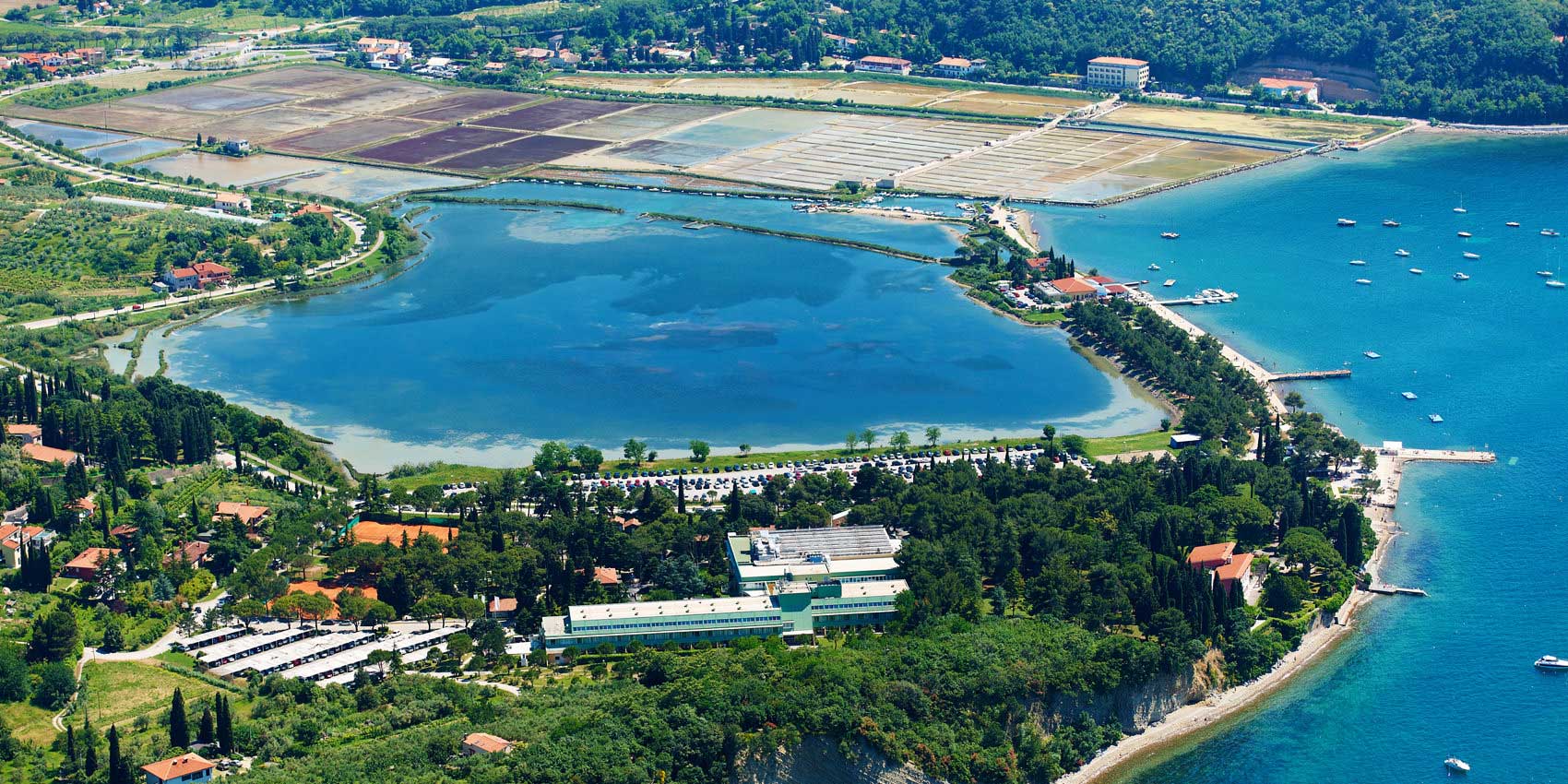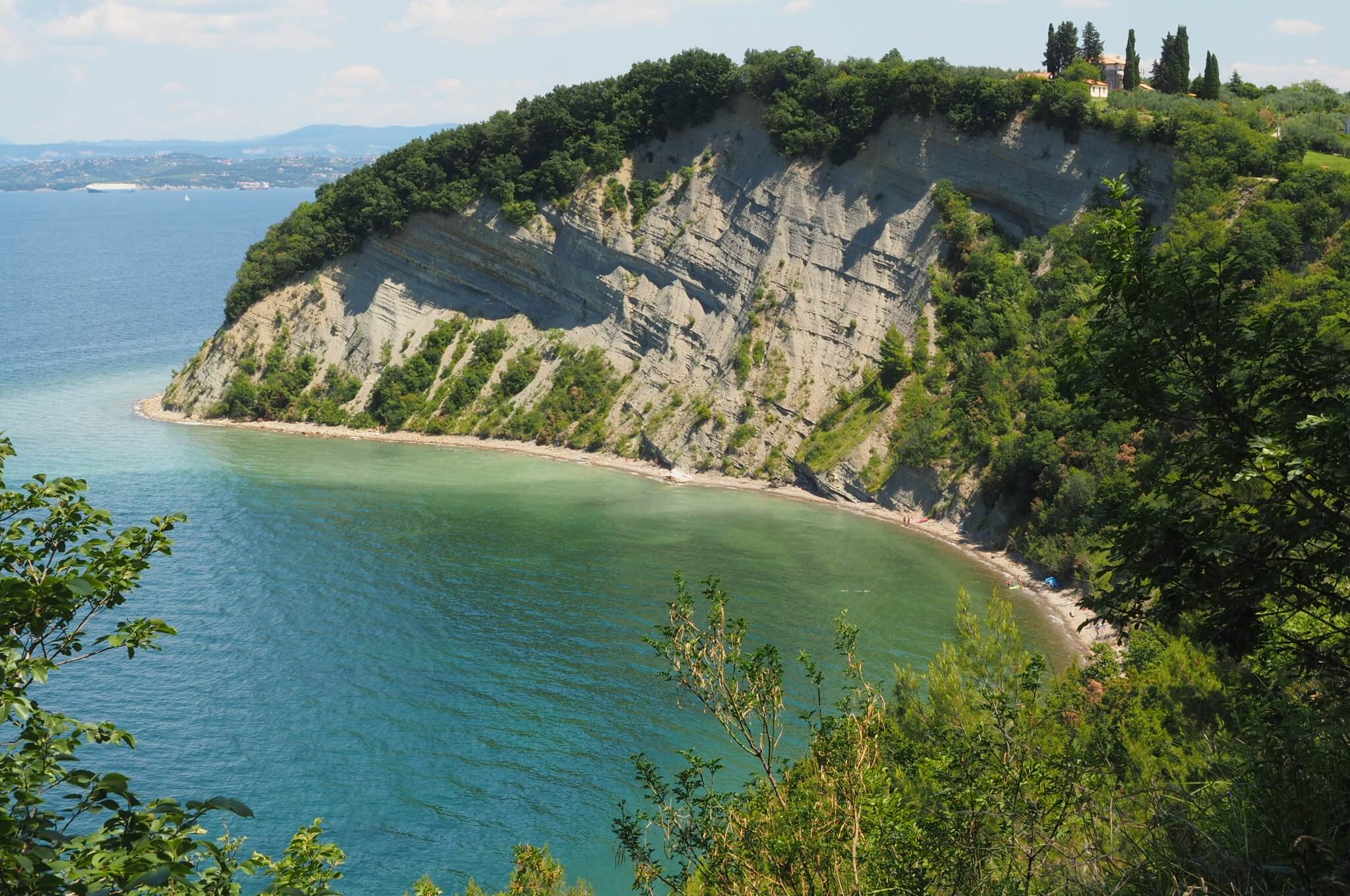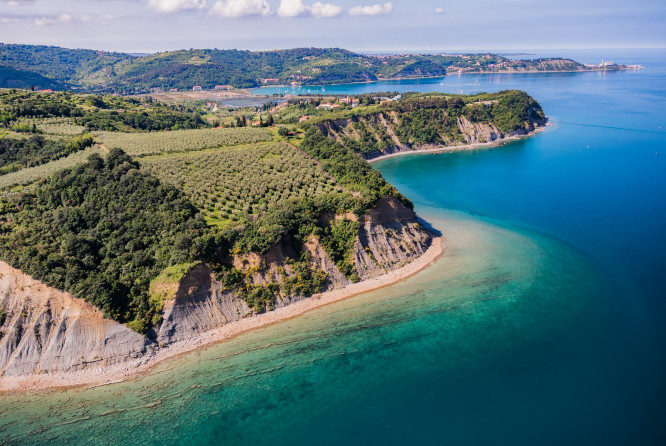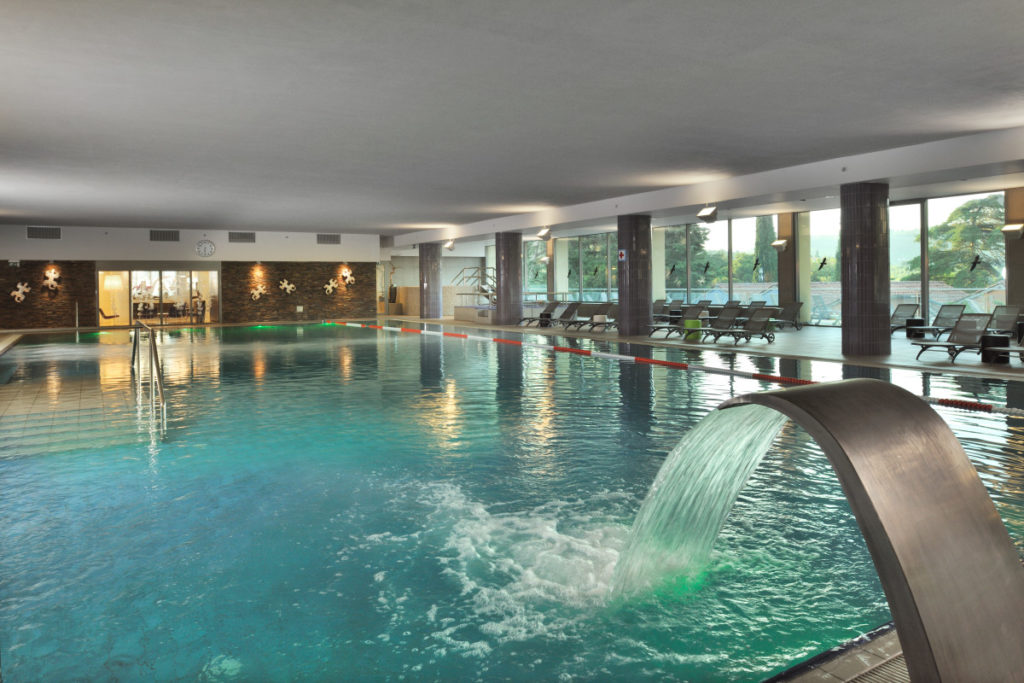Strunjan - Virtual Tour 360°

The town and its area
In north-western Istria, a stone's throw from the Italian border, is the small hamlet of Strunjan (in Slovenian Strunajan) which is part of the nearby municipality of Piran (Piran); extending to the southern part of the Slovenian coast.
Strunjan develops along the coast a few kilometers from Izola (in Slovenian Izola) and not so far from the state road that leads to Portorož (Portorož) and Piran.

Today Strunjan remains a small settlement, part of which has been transformed into a nature reserve, which consists of five small settlements: Carbonaro (Karbonar), Marzanedo (Mar? Ane), Punta Nambole (Pretski Gri?), Ronco (Ronek) and Holy Spirit (Sv. Duh).

Overall, fewer than six hundred inhabitants live in this "patch" of coast. But every year, tourists are more and more numerous and come here, from all over Europe, to spend a holiday between sea, wellness and good food.

In the village, moreover, the accommodation facilities are of a good standard. There are also some restaurants or some negotiations where it is always possible to taste the typical dishes of Mediterranean Slovenia.
For those looking for fun, however, Strunjan offers some tennis courts and minigolf, outdoor swimming pools, a renowned spa and some bathing establishments.
Those who visit Strunjan can also try their hand at beautiful and relaxing walks along the coastal paths that lap the Gulf of Trieste. Or you can dedicate yourself, preferably by car, to an "out of town" excursion to nearby Piran, the worldly Portoroz, Isola or Fiesso.

In this part of Mediterranean Slovenia, the climate also benefits from the influences of the sea and is quite mild in all seasons.
Temperatures in Strunjan are hardly ever cold. In January, when in most of Slovenia, the cold is felt. Here in Strunjan, the thermometer hardly drops below 3 ° minimum and 7 ° maximum. In July, however, it never gets too hot. The temperature is easily bearable and oscillates, on average, between 20 ° and 28 °.

The Saline
The Strunjan salt pans are the smallest in the whole Mediterranean. Yet they represent a truly tangible imprint of this area as well as of the surrounding environment.
These salt flats, moreover, have their own history of at least seven hundred years. They existed, already in the distant Middle Ages, and stood near the mouth of the Roja stream.
Today, more than ever, the salt pans for their unmistakable beauty are protected as a naturalistic and cultural heritage within the Strunjan Natural Park.

In fact, they represent a great attraction for this strip of Mediterranean Slovenia revealing themselves, in all their beauty, especially at sunset when the sun's rays lick the surface of the water in a truly magical and, almost always, unforgettable play of colors.
Next to them is Chiusa, the lagoon that was once used as a fish pond.

The Nature Reserve
The cliffs, up to 80 meters high, are the great attraction of Strunjan. They look truly magical. They show the marks left by the sea and the wind on the rock and look like sculptures perfectly set in the surrounding landscape.
Below them a wild coast stretches out and populated by countless animal, marine and plant species.
Click for more information on the cliffs and lots of useful information to visit them.

The Falese are part of the Strunjan Nature Park. One of the smallest parks in the whole of Slovenia with an extension of 428.6 hectares and 4 kilometers of coastline that lap the Gulf of Trieste.
The park area includes the Strunjan Peninsula (from the Bay of San Simone to the mouth of the Roja stream), an adjacent stretch of sea 200 meters wide and the internal part of the Strunjan Bay.

Also within the Park, there are also three "second band" protected natural areas which are:
- the Strunjan Nature Reserve,
- the Strunjan Chiusa Nature Reserve;
- The natural monument Avenue of the domestic pines;
Click to download a brochure of the Park.

The Sanctuary of Our Lady of Strunjan
In the village there is a rapid porphyry staircase that leads to the Sanctuary of the Madonna di Strunano.
The Sanctuary is located on the western slopes of Mount Ronco and the legend has it that, on the night between 14 and 15 August 1512, the Madonna appeared to two vineyard guardians begging them to urge the city authorities to repair the church which, shortly after little, it was going to ruin.
The request was satisfied and the church was soon refurbished. With the addition, in 1520, of a canvas of the Apparition made by Francesco Valerio Marini.

Over time, this Sanctuary became the most important pilgrimage center in all of Istria.
From the Sanctuary starts a very suggestive path that leads the faithful to a cross that opens towards the sea. According to locals, this monument is intended to be a good omen for all those who sail in this part of the Adriatic.

In the village, there is also a historic building. In the direction of Piran, overlooking the sea, the villa of Giuseppe Tartini is immersed in a lush park full of Mediterranean vegetation: a Piranese violinist who lived here between 1962 and 1970.
Click to listen to a composition by him.
The Baths
The town is home to a large spa "Vitarium Spa & Thalasso" capable of satisfying the most varied needs for health, relaxation and well-being.
Here in Strunjan, the water from the nearby sea is also used in the indoor pools, allowing guests to enjoy the pleasure and beneficial effects of swimming in the warm water of the Adriatic all year round.
But not only that, sea water with its properties is also used in an increasing number of therapies in these parts.
Mud packs, refreshing beauty treatments, relaxing baths and a pleasant world of saunas complement the offer of this spa.

Video: Strunjan - Virtual Tour 360°
Map: Strunjan - Virtual Tour 360°
Address: Obala 16 6320 Portorož
Portorose (Slovenia)
Latitude: 45.5313674
Longitude: 13.6014931
Site: https://www.portoroz.si/it/sco...
vCard created by: Marco Cadelli
Currently owned by: 00002738
Type: City
Function: Public place
Creation date: 18-04-2022 12:36
Last update: 05/05/2022
vCard Value: $6,00
vCard Views: 777